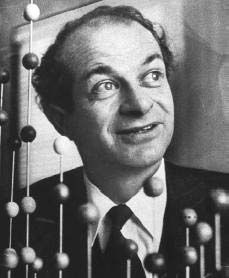| Linus Pauling | |
|---|---|
 |
|
| Chemist | |
| Specialty | Physical chemistry |
| Born | Feb. 28, 1901 Portland, Oregon, USA |
| Died | Aug. 19, 1994 (at age 93) Big Sur, California, USA |
| Nationality | Swiss |
Linus Pauling, a renowned American chemist, integrated chemistry with quantum theory and founded a discipline now known as molecular biology. From the year 1945 he devoted most of his time to antiwar activities and preventing the testing of the nuclear weapons. Linus is the only individual to win two non-shared Nobel Prizes, one for peace and one for chemistry.
Pauling’s Early Life
Linus Pauling was born in 1901 in Portland, Oregon. He was the first of three children born to Henry Pauling and Lucy Isabelle Pauling. His family relocated several times as his father struggled to make ends meet. Linus attended high school in Condon and Portland, Oregon. He was an introverted but inquisitive child.
He first expressed his interest in the field of science by collecting insects and rock minerals. Pauling was introduced to chemistry by Lloyd Jeffress, a classmate who became a lifetime friend. Identifying Pauling’s devotion to class work, his high school teachers permitted him to work independently in the school’s lab. Linus excelled in the language arts as well, including public speaking.
College Years
After finishing high school, his mother wanted him to work as a machinist, but he was determined to become a chemist. He enrolled in Oregon State University in 1917 and earned a B.Sc. degree. After taking analytical chemistry in the university, the school allowed him to teach the course.
His students loved him, particularly a young woman named Ava Helen Miller, who later became his wife. During the summer months, Pauling worked for the Oregon transportation section testing paving materials. This job widened his outlook on the planet, offsetting his propensity to isolate himself in science.
Post-College Years
In 1922, Linus graduated as the salutatorian of his class and enrolled in the California Institute of Technology with a generous fellowship. At CIT, Pauling became a specialist on X-ray diffraction, studying the orientation and spacing of atoms in crystalline materials. After three months, he produced his first research paper on crystal structure. In 1925, he finished his doctorate and, with the aid of the Guggenheim Foundation fellowship and National Research Council fellowship, he studied in Europe from 1926 to 27.
Pauling’s Work and Career
From 1927 until 1964, Pauling was the member of the professorial staff of Caltech, earning a reputation as a talented teacher. For 22 of those 37 years, he was the director of the Gates and Crellin Laboratories of Chemistry. He also chaired the Division of Chemistry and Chemical Engineering.
Achievements and Accolades
 Pauling is renowned for discovering the causes of sickle cell anemia as well as creating synthetic plasma. He is also famous for determining the structure of proteins. His results are still regarded as the fundamental rules of biochemistry and have influenced numerous useful biotechnology applications.
Pauling is renowned for discovering the causes of sickle cell anemia as well as creating synthetic plasma. He is also famous for determining the structure of proteins. His results are still regarded as the fundamental rules of biochemistry and have influenced numerous useful biotechnology applications.
In 1951, Pauling won a Nobel Prize in Chemistry for his job on the determination of chemical bonds and applications related to biological molecules structure.
During World War II, Pauling’s laser-like focus on his job shifted for the very first time. He took the public stance against the use of nuclear weapons while calling for international diplomacy through the UN. He was later awarded the Nobel Peace Prize for his humanitarian efforts.
He also received other honors, including the National Medal of Science and the Presidential Medal for Merit. He published a number of books on a range of subjects such as No More War and How to Live Longer and Feel Better, to name but a few.
Legacy and Later Years
Linus lived a productive life. As a biologist and a scientist, he influenced many generations of biologists and chemists through his writings. As an activist, he challenged the military and political establishments of the US. As a health campaigner, he persuaded people to consume supplemental vitamins.
Pauling could be very persuasive. His lectures were fascinating, and he had a simple literary style. He campaigned for social progress as well as humanitarian concerns like public health and health promotion. He came up with controversial theories. He maintained moral positions concerning several scientific issues.
In his later years, he became a Vitamin C champion. He believed that taking high doses of vitamin C would ward off many infections and perhaps prevent or treat cancer. Pauling died in 1994 of prostate cancer in his California home.